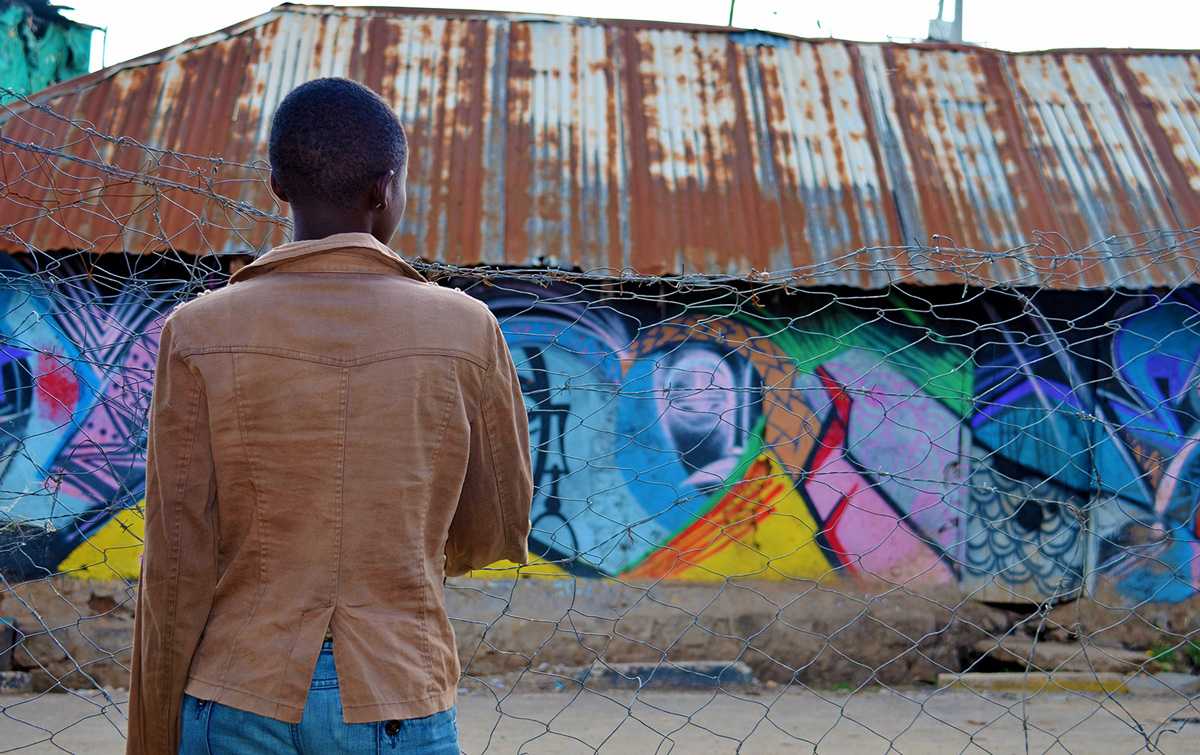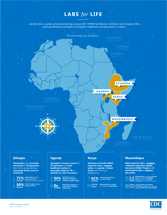An AIDS-free Future: CDC Helping Young Women Achieve Their DREAMS

Marlyne, a 13-year-old resident in the Korogocho slum of Nairobi, Kenya, left school at age 10 to help support her family. She was able to return to classes with the help of PEPFAR, CDC, and partner LVCT Health.
When you meet Marlyne, you can sense that she has a strength and determination that belies her tender age. Like many 13-year-old girls in Kenya, she dreams of a better life for herself and her family, and she is willing to work hard to achieve her goals.
She leaves for school at 6:30 every morning and doesn’t return home until nearly 7:00 at night. In a country that does not offer subsidized secondary education to all students, she is spending nearly 12 hours a day studying for the exams that will determine whether she can secure a spot in one of Kenya’s most prestigious public high schools.
But her dreams were almost cut short by the loss of family and the challenging environment encountered by those who live in Korogocho, one of Nairobi’s largest slums.
A Difficult Life in Korogocho
When Marlyne was only 10 years old, her mother left her and her four younger siblings with her grandmother; she says she doesn’t know where her mother went.
Her grandmother found it difficult to provide meals and educational fees for five young children. Marlyne, a very good student when her mother was still with her, was sent home from school several times because her fees were not paid. Eventually, she had to drop out.
Still just 10 years of age and determined to help her grandmother provide rent and food for her siblings, she began washing clothes for families in a nearby community for 50 Kenyan shillings a day (about 50 U.S. cents).
And that’s when she says that her life became much worse. She found herself being abused by the men in the families for whom she worked, but she didn’t feel she could quit. When she didn’t get money, she couldn’t support her family.
She was not the only young girl from Korogocho who dealt with abuse. Some of her friends got pregnant or became HIV infected. Some committed suicide.
“It was a living hell,” Marlyne says quietly.
DREAMS Initiative Activities
Patricia Oluoch, CDC Kenya activity manager for LVCT Health’s program, notes, “In addition to educational support and cash transfers for the most vulnerable girls, the DREAMS initiative will provide an age-appropriate package of services that will include HIV testing and counselling; post-violence care; social safety nets through mentors, peer groups, and civic engagement; access to health information and services; school-based HIV and violence prevention; and parenting and caregiver programs.”
“We will also work with young women ages 18 to 24 to empower them economically. Activities will include vocational training; linking them to microfinance institutions; formation of saving groups; entrepreneurship training and internships; and proposal writing to access loans provided by a youth and women's fund."
A Helping Hand from CDC and Partners
Eight months after she left school, she noticed staff from LVCT Health, a CDC partner helping to implement HIV programs in support of the U.S. President’s Emergency Plan for AIDS Relief (PEPFAR), visiting her community.
“They used to greet us,” Marlyne recounts. They asked her and two of her friends about their life history and their parents and included the young girls in HIV prevention classes.
And, most important to Marlyne, LVCT Health took her back to school, allowing her to leave behind her abusive employers.
LVCT Health’s One Child at a Time (OCaT) program has provided support for over 1,500 children aged 10-17 in Korogocho, many of whom have been sexually abused or exploited. With CDC and PEPFAR support, the program provides HIV behavioral and biomedical interventions to help them mitigate the risks of HIV infection.
The children’s health is monitored, and they are provided testing for HIV and sexually transmitted infections. Of the 1,500 children in the OCaT program, 22 were found to be HIV positive and 15 young women were pregnant.
What many children hope for is the chance to return to school. Some of the young people in OCaT’s program continue formal schooling while others go to vocational schools. The OCaT program may help with uniforms for younger children who are attending public school or low-cost private schools that also provide daily lunch. For those who finish Class 8, the program is able to help some attend secondary school.
With CDC and PEPFAR support and additional website donations, the OCaT program has been able to help over 130 children return to school.
Marlyne is one of the lucky ones whose school fees are provided by the program, and she has now caught up with her peers. Her grandmother is also given support to help provide meals for Marlyne and her brothers and sisters.
Marlyne has another concern though – her friends. More children want to return to school, and she asks how they can be helped.
The PEPFAR DREAMS Initiative
LVCT Health was chosen as one of five CDC implementing partners who will help implement the new PEPFAR DREAMS initiative to reduce the risk of HIV infection among adolescent girls and young women. In sub-Saharan Africa, young women aged 15-24 years are three times as likely to be HIV infected as young men of the same ages.
A recent study in Botswana has shown that, for each year adolescent girls and young women remain in secondary school, their risk of becoming infected with HIV is reduced. The DREAMS initiative – which stands for Determined, Resilient, Empowered, AIDS-free, Mentored, and Safe – will ensure LVCT Health can help 300 additional girls continue their education and provide small cash transfers to those families in greatest need, along with other health and social support services (see text box).
A Future for Marlyne
With her resolve, Marlyne has a strong chance of getting into a good school. Last year, five students in the OCaT program went to national level schools. Some of them caught up in their class work after being out of school for more than three years.
After she finishes secondary school, Marlyne hopes to become a veterinary doctor. When asked what her favorite animal is, she decides, “Rabbits – because they are calm.”
Giving young people like Marlyne the opportunity to continue their education can help them avoid the circumstances that put them and their communities at risk of HIV infection. More than most young people her age, she knows what an education means to her and her family, and she is willing to work very hard to achieve her dreams.
“We need to aim high,” Marlyne says. “And we have to perform.”
Labs for Life Infographic:

Get email updates
To receive email updates about this page, enter your email address:
Contact Us:
- Centers for Disease Control and Prevention
1600 Clifton Rd
Atlanta, GA 30333 - 800-CDC-INFO
(800-232-4636)
TTY: (888) 232-6348
24 Hours/Every Day - Contact CDC-INFO
 ShareCompartir
ShareCompartir


